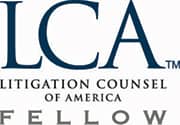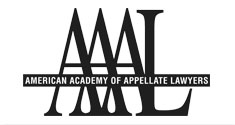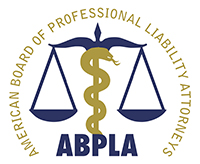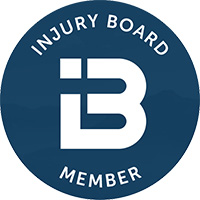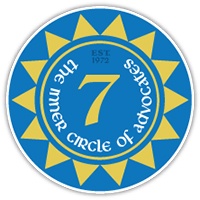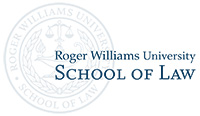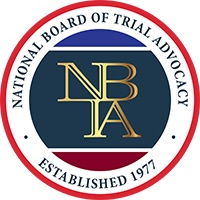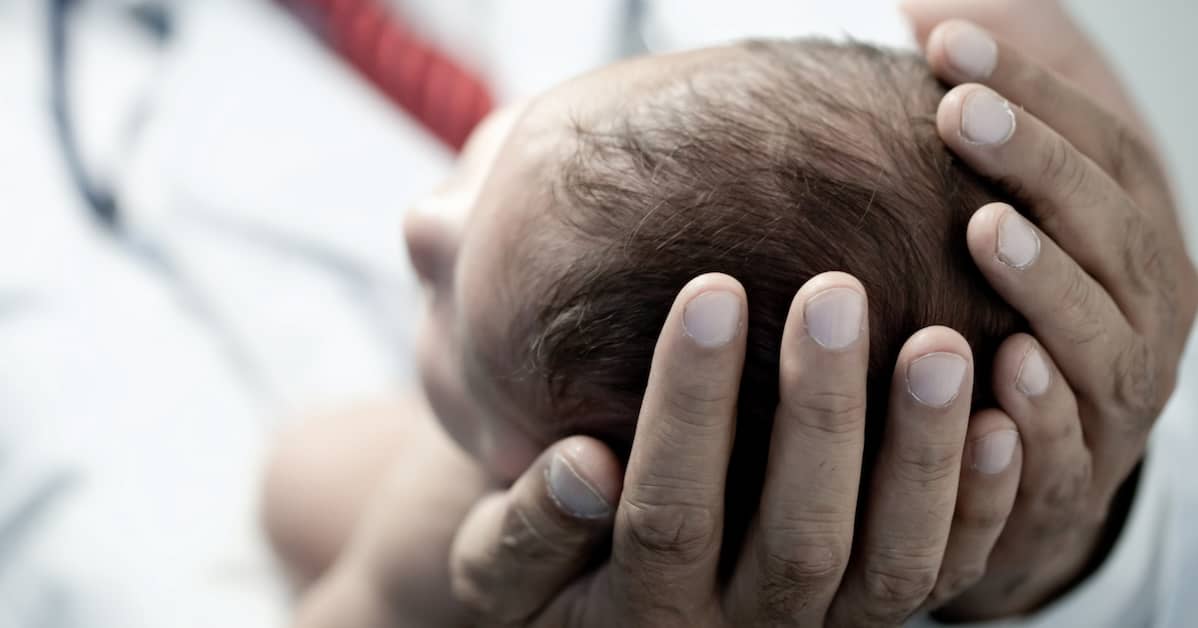
What Happens When the Umbilical Cord Is Wrapped Around a Baby’s Neck?
The umbilical cord serves as a lifeline between you and your baby during pregnancy, delivering essential nutrients, blood, and oxygen. However, this lifeline can become a source of concern if it wraps around the baby’s neck, resulting in a condition known as a nuchal cord. This situation occurs more frequently than many expect. The American Journal of Obstetrics and Gynecology reports that nuchal cords are present in about 20 percent of all deliveries.
While a nuchal cord can often be managed without harming the baby, there are instances where it leads to restricted oxygen supply, especially if the cord wraps around the neck multiple times. Tragically, when the issue is not detected by healthcare professionals, an umbilical cord wrapped around a baby’s neck can lead to serious birth injuries.
At Mandell, Boisclair & Mandell, our knowledgeable and experienced birth injury attorneys understand how devastating the injuries caused by an umbilical cord wrapped around a baby’s neck can be. We are prepared to investigate the circumstances surrounding your child’s injury, identify all responsible parties, and help you seek the compensation your family is due.
To schedule a FREE and confidential consultation with one of the Providence umbilical cord complication lawyers at Mandell, Boisclair & Mandell, call us at 401-273-8330 today. We fight for babies and their families throughout Rhode Island.
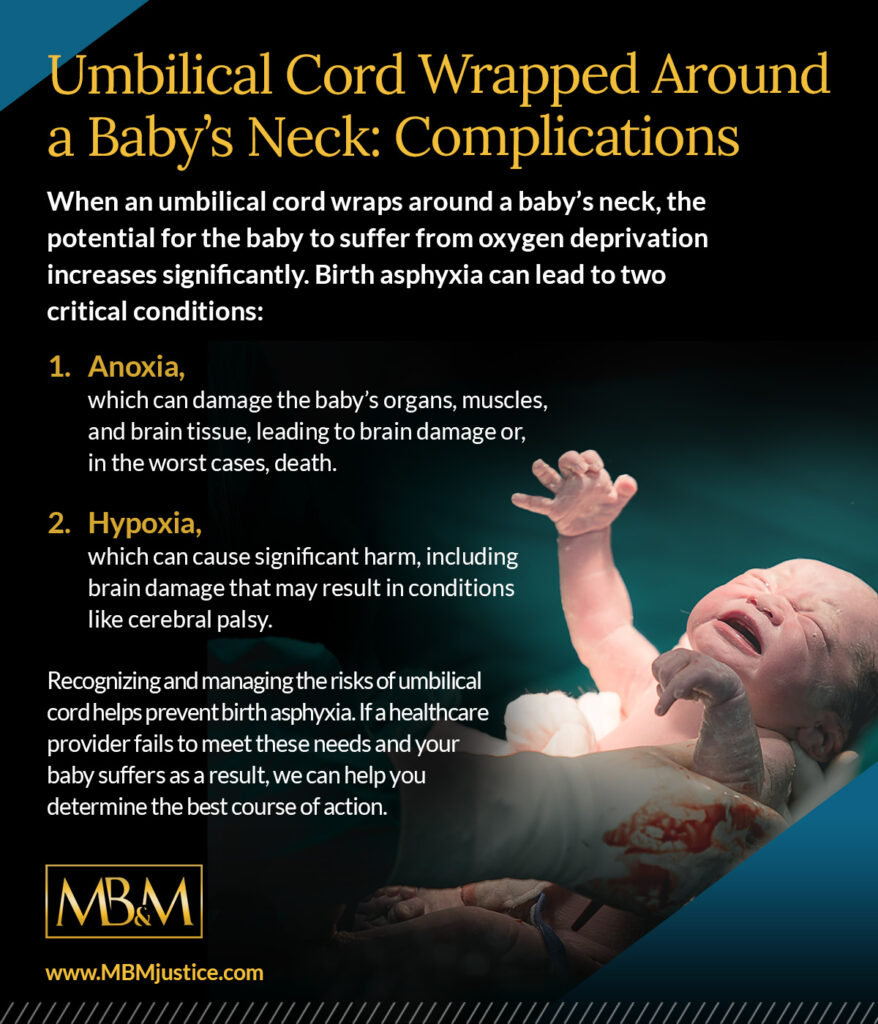
Symptoms of an Umbilical Cord Wrapped Around a Baby’s Neck
Signs and symptoms of an umbilical cord entanglement are not always immediately noticeable. This makes proper monitoring during labor and delivery all the more important. Key indicators that healthcare providers should look for include:
- Changes in Fetal Heart Rate
- Changes in Fetal Movement Patterns
- Unusual Fetal Positioning
- Decreased Amniotic Fluid
Healthcare professionals are equipped with various tools and protocols to closely monitor the health of both mother and baby during labor. This includes the use of fetal heart rate monitoring, the application of periodic ultrasounds, and thorough assessments of labor’s progress to catch any issues early on.
In situations where there is a lapse in this standard of care—whether through failure to monitor effectively, misinterpretation of fetal distress signals, or delay in responding appropriately—the consequences can be severe. Failure to notice the signs of an umbilical cord wrapped around a baby’s neck may be a form of medical malpractice, entitling injured babies and their families to compensation for both immediate and long-term damages. If you suspect your child was injured due to a nuchal cord, we are here to listen to your story and help you understand your options and rights.
What Immediate Steps Should Be Taken if an Umbilical Cord Is Wrapped Around a Baby’s Neck?
The immediate step is careful monitoring if an umbilical cord is detected around a baby’s neck. Most times, nuchal cords do not require intervention. However, if the baby shows signs of distress, several options might be exercised. These include:
Non-Invasive Interventions
- Positional Changes: Sometimes, changing the mother’s position during labor can alleviate pressure on the cord and improve blood flow and oxygen delivery to the baby.
- Oxygen for the Mother: Providing supplemental oxygen to the mother can sometimes increase the oxygen available to the baby, which can be beneficial in managing minor issues related to a nuchal cord.
Invasive Interventions
- Manual Resolution: In some cases, if the cord is loosely wrapped, the healthcare provider may be able to manually unwrap the cord from around the baby’s neck during delivery.
- Expedited Delivery: If there are signs of distress and it’s deemed safe, an expedited vaginal delivery using assistive measures like vacuum extraction or forceps might be considered to reduce the time the baby is under stress.
Surgical Intervention
- Cesarean Section (C-Section): This is considered when the nuchal cord is causing significant distress to the baby, or if there are other complicating factors making vaginal delivery unsafe. A C-section can alleviate the pressure of the nuchal cord by delivering the baby through surgical means.
Post-Delivery Care
In instances where a baby demonstrates signs of distress or complications stemming from the nuchal cord, they must receive immediate and specialized supportive care. This may include supplemental oxygen or admission to a neonatal intensive care unit (NICU) for more intensive treatment. Such measures are vital for the baby’s full recovery and healthy development.
What Complications Are Related to an Umbilical Cord Wrapped Around a Baby’s Neck?
When an umbilical cord wraps around a baby’s neck, the potential for the baby to suffer from oxygen deprivation—also referred to as birth asphyxia—increases significantly. If not quickly recognized and managed, this lack of oxygen can lead to two critical conditions: anoxia and hypoxia, both of which can cause severe brain damage or even result in stillbirth.
Anoxia happens when the baby’s oxygen supply is completely cut off. This can occur if the umbilical cord is knotted, twisted, or tangled around the baby’s neck in such a way that it blocks all oxygen from reaching the baby. This severe deprivation of oxygen can damage the baby’s organs, muscles, and especially brain tissue, leading to potentially permanent brain damage or, in the worst cases, death.
Hypoxia occurs when the baby gets some oxygen, but not enough to meet their needs for healthy development and survival. This might happen if the umbilical cord is pinched or twisted, restricting but not entirely blocking the flow of oxygen to the baby. While hypoxia is generally less severe than anoxia, it can still cause significant harm, including brain damage that may result in conditions like cerebral palsy that affect the child throughout their life.
Recognizing and managing the risks associated with umbilical cord entanglement is essential for preventing anoxia and hypoxia. If a healthcare provider has failed to meet these needs and your baby suffered as a result, our Providence umbilical cord injury attorneys can assess your situation to help you determine the best course of action.
Getting the Help You Need after an Umbilical Cord Injury
Negligence in the labor and delivery room can have devastating consequences for your child. If your healthcare provider’s actions or inactions led to harm, Mandell, Boisclair & Mandell can help you seek the justice you are due.
Birth injury litigation is complex, with challenges in accurately assessing both current and future impacts on your family’s life. Our attorneys possess the experience needed to thoroughly evaluate your case, helping to ensure all aspects of medical negligence, including the mismanagement of a nuchal cord, are thoroughly explored.
Our firm has a proven history, with close to 50 years of experience representing families affected by birth injuries. Our deep understanding of medical malpractice has led to unparalleled success both in and out of the courtroom. We welcome the opportunity to provide an obligation- and cost-free consultation where you can ask your questions, explore your options, and find the best path forward.
Contact Our Umbilical Cord Injury Attorneys for a FREE Case Review
At Mandell, Boisclair & Mandell, our seasoned partners—who have extensive experience in OB/GYN malpractice cases—remain actively involved in every case. This ensures that your situation is given the attention it deserves.
Understanding that the path to recovery and adjustment can be overwhelming, we limit our case intake. This approach allows us to dedicate our full resources and attention to each family we represent, fostering a deeper connection and understanding of your unique needs and challenges.
If your child has suffered an umbilical injury due to negligence during birth, contact Mandell, Boisclair & Mandell online or call our Providence office today to schedule a FREE case evaluation. We serve families living throughout Rhode Island and Massachusetts.













